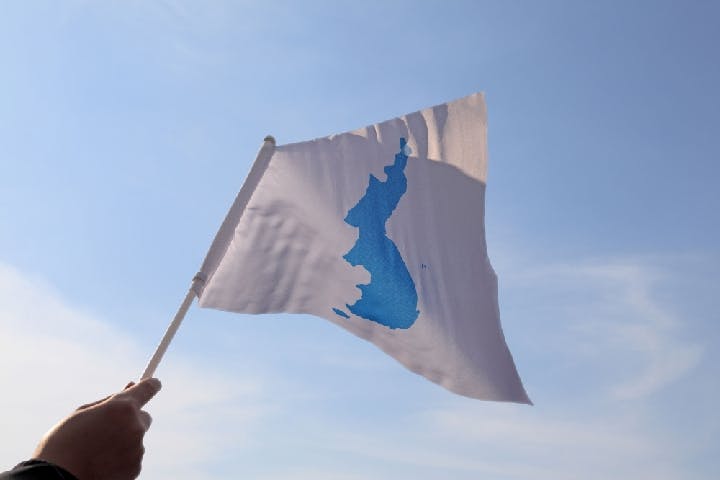Summer 2020
Together Apart
– Soojin Park
Challenges inside and outside South Korea make unification an increasingly vexing question.
In his poem, “The Waste Land,” T.S. Eliot described an England where “April is the cruelest month, breeding lilacs out of the dead land, mixing memory and desire, stirring dull roots with spring rain.”
For Koreans, the cruelest month is June. Each year, these four weeks juxtapose tragic memories of war and hopeful moments for reconciliation.
In 2020, Koreans feel this especially keenly, as they mark the 70th anniversary of the outbreak of the Korean War, and the 20th anniversary of the first ever inter-Korean summit. And they are reminded once again this June of the past which has cemented its present and future as a divided nation.
In almost every aspect, North and South Korea have traveled vastly different paths since the Korean War.
Words don’t do it justice. A nighttime satellite image of the Korean Peninsula demonstrates the stark divide between the brightly lit capitalist South, with the world’s 12th largest economy, and the pitch-dark pseudo-communist North.
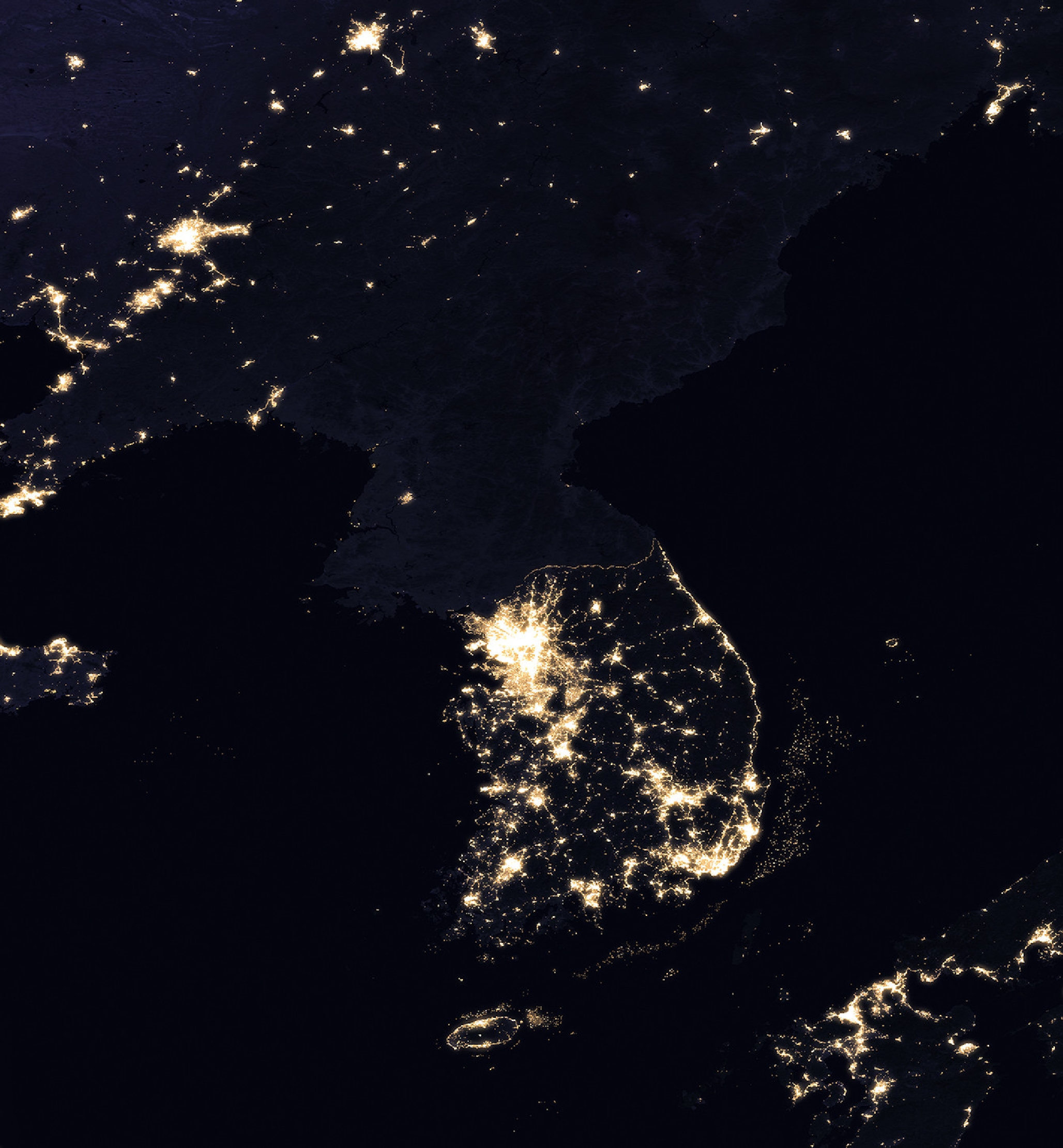
Yet, even though the two Koreas have diverged so significantly over the past 70 years, unification has remained a firmly-stated national aspiration both in North and South Korea.
The division of the Korean Peninsula after World War II was arbitrary – and provisional. It soon became a key landscape in the growing antagonism between the former Soviet Union and the United States, and this struggle eventually led to war in 1950.
The conflict was ended three years later, not by a peace treaty, but by an armistice. So, technically, North and South Korea remain at war to this day. And the present divide is the last remaining vestige of the old Cold War.
The division of what was once a single unified country for over a millennium against the will of the vast majority of Koreans fuels a natural and understandable sentiment for unification. But on whose terms? The divergence between the two Koreas has not merely been visible from space.
Backed by the United States, and the former Soviet Union, respectively, both South and North endeavored to rebuild from a devastating war that wiped out more than 10 percent of the peninsula’s population, as well as major industrial facilities. The authoritarian leaderships in both Seoul and Pyongyang engaged in a keen competition to prove the superiority of their state and system, until the collapse of the Soviet bloc.
Even though the two Koreas have diverged so significantly over the past 70 years, unification has remained a firmly-stated national aspiration both in North and South Korea.
The contention is also evident in each party’s formal definition of unification prescribed by law. Both North and South Korea claim the entire peninsula as their constituent territories, and have mandated the pursuit of a peaceful reunification of the homeland in their respective constitutions.
Without officially recognizing each other as a legitimate state, a mechanism has been put in place to address what both Koreas agreed to characterize as “special relations”. Seoul has the Ministry of Unification, and Pyongyang, the Committee for the Peaceful Reunification of the Fatherland and the United Front Department.
Buoyed by a boosted confidence created by its economic and political development, Seoul has been more forthcoming in its approach to and engagement with Pyongyang. South Korea’s first directly elected democratic President Roh Tae-woo proposed Korean National Community Unification Formula in 1989: a gradual, phased, and peaceful unification based on mutual cooperation and reconciliation instead of adversarial confrontation.
An updated three-phase blueprint, devised in 1994, envisions a process of increased inter-Korean exchange and cooperation leading to economic integration and a union of two systems before an eventual unification.
This has been the basic framework for unification policy for over three decades in the South, across political spectrums both left and right. But for any potential and constructive discussion on unification to possibly unfold, South Koreans first need to ask themselves three key questions:
Do South Koreans today want to unify with North Korea? How do state of relations – inter-Korean and geopolitical – help or hurt the cause? Lastly, considering unification has long been a desired national aspiration in the Korean psyche, then how does it get done?
Changing Sentiments
Even as the government in Seoul has set out plans, the concept of “unification” has become a rather loaded -- and charged -- term for South Koreans.
The popular song, “Our Wish Is Unification,” was once an unofficial anthem widely sung at gatherings of national celebrations. Yet today, it has been transformed into a “thing of the past,” with lyrics that now sound outdated and much less relatable to many contemporary Koreans.
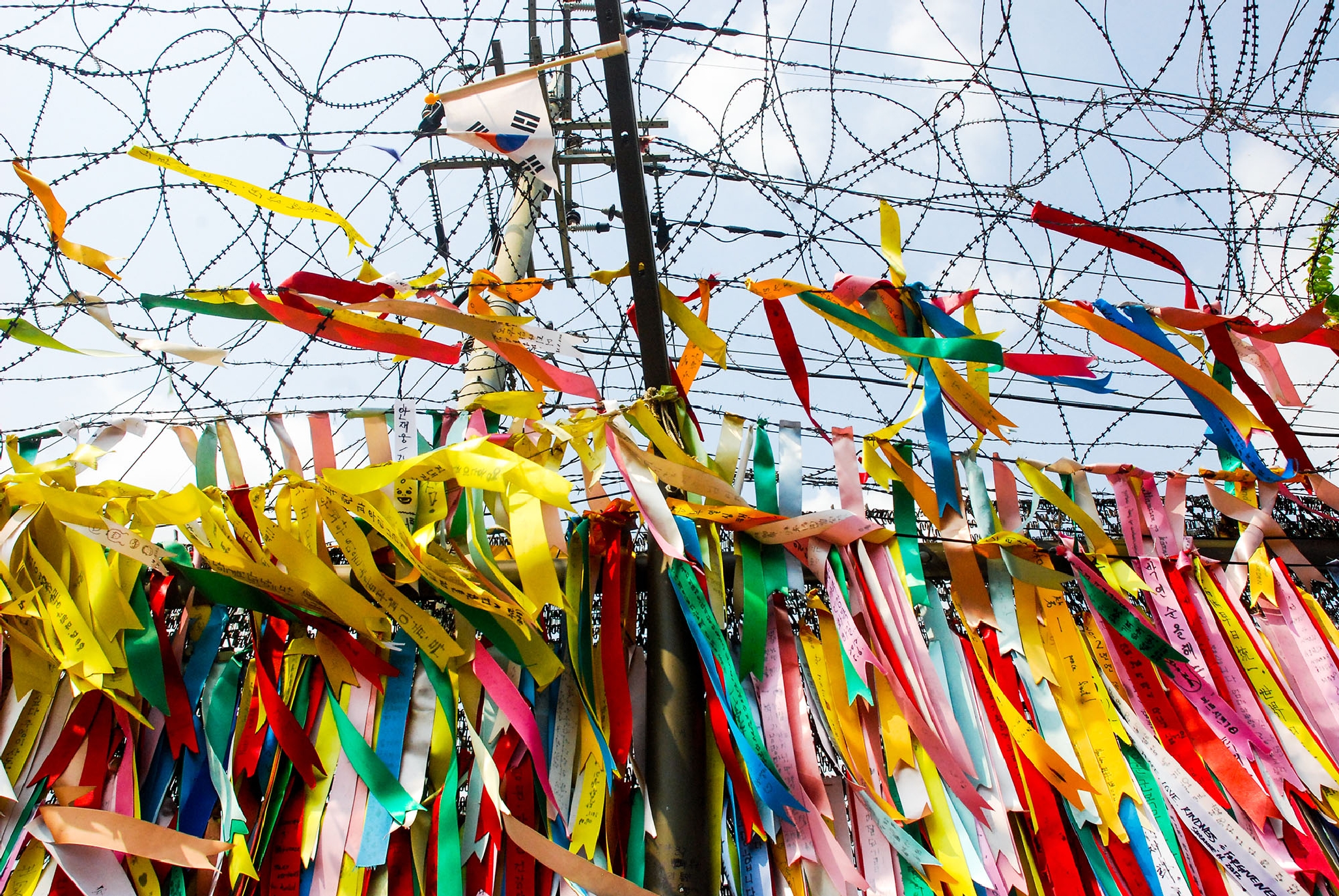
Time has also played a role. As the elderly population who lived with pangs of family separation, and in hopes to reunite one day with long-lost kin in the North, passes from the scene, the collective intensity of emotions and yearning for unification in South Korea also have begun to wane.
In fact, recent studies reflect this changing sentiment. According to Unification Perception Survey 2019 by the Institute for Peace and Unification Studies (IPUS) at Seoul National University, 53 percent said unification is necessary, down from 64 percent in the institute’s initial survey in 2007. And the number of those who said unification is not necessary, or they liked the divided nation “as it is,” rose to a combined 40 percent, after registering only 27 percent in 2007.
Nearly 62 percent of South Koreans polled thought that unification would be beneficial to the country as a whole, but only half that number felt that unification would be good for individuals. Even more telling, 77 percent of South Koreans said they would choose the economy over unification if they had to pick one issue to resolve, according to research conducted in 2018 by the Korea Institute for Health and Social Affairs (KIHASA).
The reasons why the South Koreans view unification as necessary are also shifting. The number who cited the need for unification “because we are one people” dropped to 35 percent from a record high of 58 percent in 2008. Those who said unification is necessary “to eliminate the threat of war” rose more than twofold to 33 percent from 15 percent (IPUS). This data suggests a tilt in South Korea toward more pragmatic reasons to unify, and away from the nationalistic, or emotional ones that rang true a decade ago.
Familiarity Over Fear?
South Korea’s politics seem to be following the pragmatic track that its people are expressing. It may be changing the way that North Korea is perceived as well as what people think about the possibilities of unification.
A sudden detente in 2018 led to three inter-Korean summits between President Moon Jae-in and Chairman Kim Jong Un. These meetings likely had a positive impact on how South Koreans view North Korea.
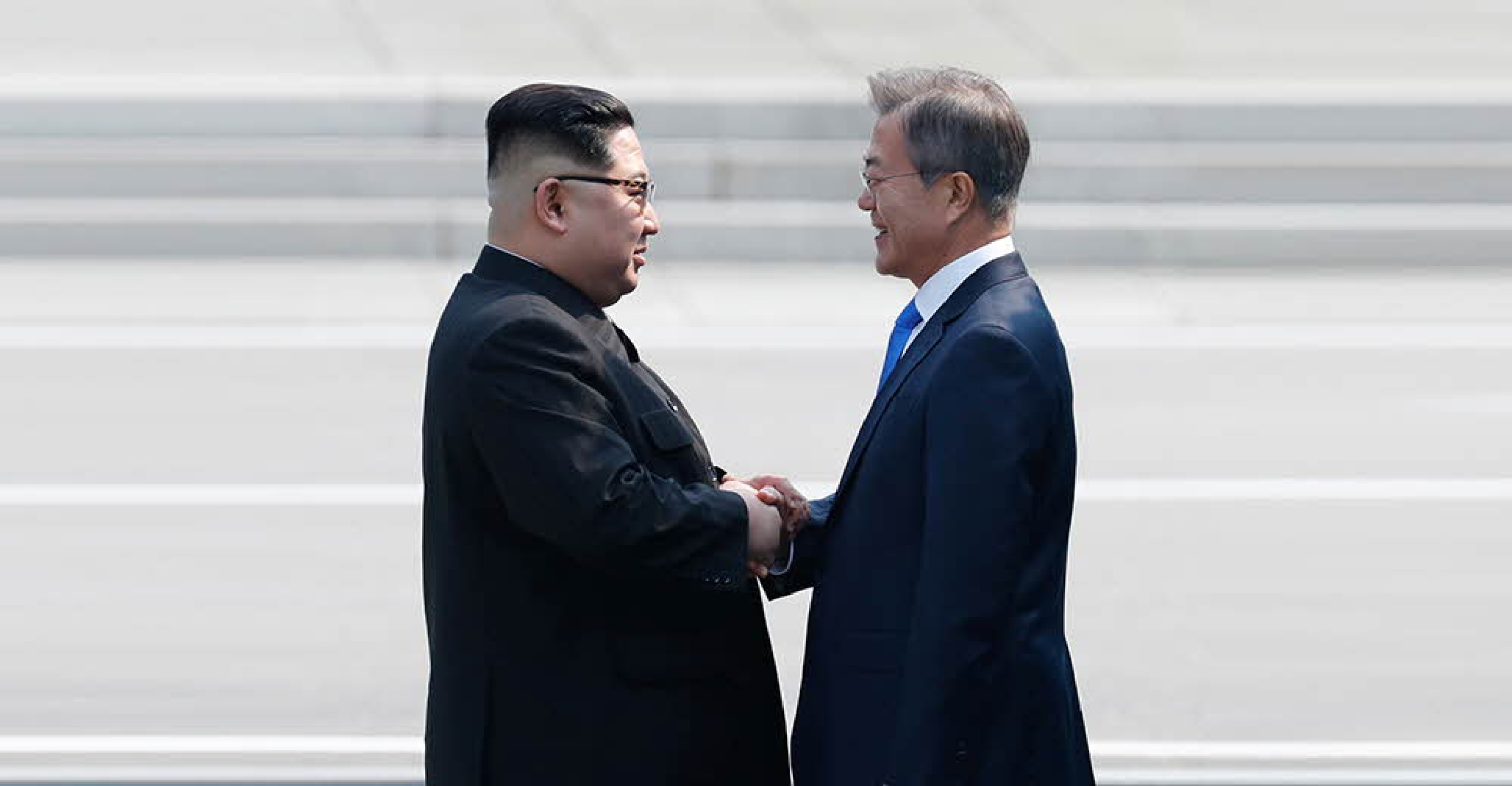
The two Koreas had only held two previous summits – in 2000 and 2007. In the year following the three unprecedented summits of 2018, 52 percent of South Koreans polled by IPUS said they saw North Korea as a counterpart that was capable of dialogue and negotiations. That number was a leap from 29 percent in 2017, only two years earlier.
The IPUS poll also revealed that the number of South Koreans who saw North Korea as a subject for cooperation in 2019 (54 percent) was nearly double the number who saw it as the occasion for vigilance or antagonism (28 percent). This was a notable shift from a relatively evenly divided view (42 vs. 39 percent) that held sway in 2017 (IPUS).
Despite these growing favorable numbers, however, South Koreans did continue to take a dim view of North Korea’s nuclear stance. The IPUS poll also reflected that the perceived threat in the North’s possession of nuclear weapons rose from 71 percent in 2017 to nearly 80 percent two years later (IPUS).
Opinion polls seem to portray a more realistic and practical tendency toward unification among the South Korean public. They also demonstrate a cognitive ambivalence between what has long been inscribed in South Korean politics and culture as a national aspiration, and how beneficial or desirable unification would be for them as individuals.
In the year following the three unprecedented summits of 2018, 52 percent of South Koreans polled by IPUS said they saw North Korea as a counterpart that was capable of dialogue and negotiations.
These polls also bring forward the mixed feelings that South Koreans have about their wish to live free from fear of war (and see an end to the hostile provocations of the North’s nuclear rhetoric), as well as the potential sacrifices unification might bring, not to mention the political, economic, and social shake-ups to their present comfortable lives.
Perhaps it is because South Koreans are becoming wary of the exorbitant costs and potential sluggish economy created by unification that governments in Seoul are underscoring the long-term benefits of North-South engagement, if not actual unification per se.
Progressive administrations, including the incumbent Moon government, emphasize the mutual interests involved in inter-Korean projects such as infrastructure building to help lay the foundation for improved economic exchange and prosperity in both North and South Korea.
Though different in approach, previous conservative administrations have also portrayed unification in a positive light, and called it a welcome “blessing” or “bonanza” that would benefit Koreans by radically reducing the high cost of division – especially in large defense expenditures and other crucial sectors suffering from undervaluation due to the so-called “Korea discount,” which reflects the risks related to the North Korea threat.
Defectors: A Unification Preview?
Unification is a concept that has long been deemed a national aspiration. In reality, it is a notion which is abstract and foreign to most contemporary South Koreans. They were born into a divided Korea, and have lived their entire lives in it, with little exposure to North Koreans, let alone direct interaction with them.
North Koreans, of course, have lived their lives isolated in the reclusive totalitarian state. Yet what happens when there is sustained contact? The influx of North Korean defectors into the South, however small, has given us a glimpse of what unification may actually entail.
The majority of 33,500 defectors from the North live on the margins of the capitalist South, both socially and economically. Despite provisions which allow them to obtain housing and basic settlement subsidies after a mandatory 12-week training in residence, these newcomers have a hard time learning the basics for survival. Many of them have significant difficulties adjusting and surviving in hypercompetitive South Korean society.

Even spoken language itself becomes an obstacle for assimilation. The language in the South has a widespread use of foreign terms and expressions that reflect new technologies and cultural mores – further heightening already steep divides between South and North Koreans in education, financial literacy, and digital fluency.
There are a growing number of North Korean defectors in the South, even if they only represent a miniscule 0.0006 percent of the nation’s population of 51 million. But one striking trend in public sentiment is a dwindling of support for taking them in.
Support for the government’s policy of accepting all North Korean defectors into the country dropped to 34 percent in 2019 from 52 percent in 2007 in the IPUS poll. And the number of those in favor of changing that policy to a selective acceptance of defectors has risen from 37 percent to 53 percent during the same period.
Public support for an increase in government assistance for defectors also dipped to 36 percent from 56 percent in a span of a decade. Those who disagreed with increases in assistance rose to 64 percent from 44 percent according to the 2019 IPUS study.
Many defectors have significant difficulties adjusting and surviving in hypercompetitive South Korean society.
Feeling as if they are second-class citizens, North Korean defectors have begun to take the initiative to assert their presence and make demands for themselves by entering South Korea’s legislature. Although the defectors’ first political party, the South-North Unification Party, failed to yield any lawmakers in the 2020 general elections, two defector-turned activists – including a senior ex-North Korean diplomat – did win election into the 300-member National Assembly as representatives of South Korea’s main opposition party.
Winning votes and gaining a foothold in mainstream politics is a meaningful achievement for North Korean defectors. But have South Koreans embraced them in their daily lives? That is a different story.
When asked how comfortable they felt about North Korean defectors as neighbors and co-workers, less than 50 percent of South Koreans answered positively in the IPUS poll, and spouses are at the bottom of the scale at 18 percent.
Ironically, the IPUS poll also revealed that the level of affinity that South Koreans feel toward their new compatriots from the North is lower than that they feel for Americans, with positive responses in the same poll standing at 31 percent and 39 percent, respectively.
Unification: A Reality Check
In his address on Korea’s Liberation Day on August 15, 2019, President Moon announced ambitious goals: a joint Seoul-Pyongyang Olympics in 2032, as well as laying the foundation for peace and unification via a ‘peace economy’ for one Korea by 2045 -- the centennial of the peninsula’s liberation from Japanese colonial rule at the end of World War II.
As ideal as it would be to accomplish such feats, sizable challenges lie ahead. Beyond tackling daunting internal political, economic, and social obstacles, North Korea’s possession of WMD and interplay of geopolitics further complicate the already significant challenges.
Indeed, an eager government in Seoul and a more receptive public in South Korea today have not brought the closer ties that had been anticipated. The state of relations between the two Koreas appear to have regressed since the collapse of nuclear talks in Hanoi between US President Donald Trump and Kim Jong Un early 2019.
.jpg)
Dismayed at Seoul’s seeming inability or lack of will to help Pyongyang strike a deal with Washington (including substantive UN sanctions relief), Kim Jong Un has been giving South Korea a cold shoulder –rejecting any and all proposals for engagement since the breakdown of the negotiations with the US.
Ruling out an undesirable unification by force, or a sudden collapse of the North Korean regime (which could result in uncontrolled chaos and the proliferation of WMD), the most reasonable path to unity is mutual agreement.
Yet, neither Pyongyang nor Seoul is desirous of unification under the other party’s terms. So, unification through a peaceful merger (even in the form of “one country, two systems”) seems a far-fetched goal, at least in the short-term.
An eager government in Seoul and a more receptive public in South Korea today have not brought the closer ties that had been anticipated.
Nevertheless, President Moon seems undeterred. On the third anniversary of his presidency in May 2020, he said he would not wait for Washington and Pyongyang to resume dialogue, but do what he could to persuade North Korea to engage via projects that do not violate the UN Security Council sanctions. One area he singled out for potential inter-Korean cooperation was ‘human security’ in the wake of the global pandemic, COVID-19.
Notwithstanding such overtures, North Korea made a complete turnabout in June of this year, announcing that it would sever all communications with the South if Seoul failed to stop activists from floating balloons filled with anti-Pyongyang leaflets across the border. Pyongyang even went on to warn that "work towards the South should thoroughly turn into the one against enemy" for shattering their trust and not taking appropriate measures to advance inter-Korean relations since the Panmunjom Declaration of the April 2018 inter-Korean summit.
North Korea took even stronger action on June 16, 2020, demolishing an inter-Korean liaison office established in 2018 within the jointly built Gaesong Industrial Complex, just north of the demilitarized zone. Its government also announced imminent remilitarization of the economic districts in Gaesong and Mount Geumgang Resort as well as the DMZ.
Since the present state of affairs is intricately linked to Washington-Pyongyang negotiations, and North Korea is primarily focused on relaxing sanctions and obtaining regime security guarantees that require US cooperation, the chances of Pyongyang making a turnaround for inter-Korean engagement in the near future seem rather bleak. This is especially true when Seoul and Washington must better coordinate their own positions on both denuclearization and any ensuing sanctions relief for North Korea.
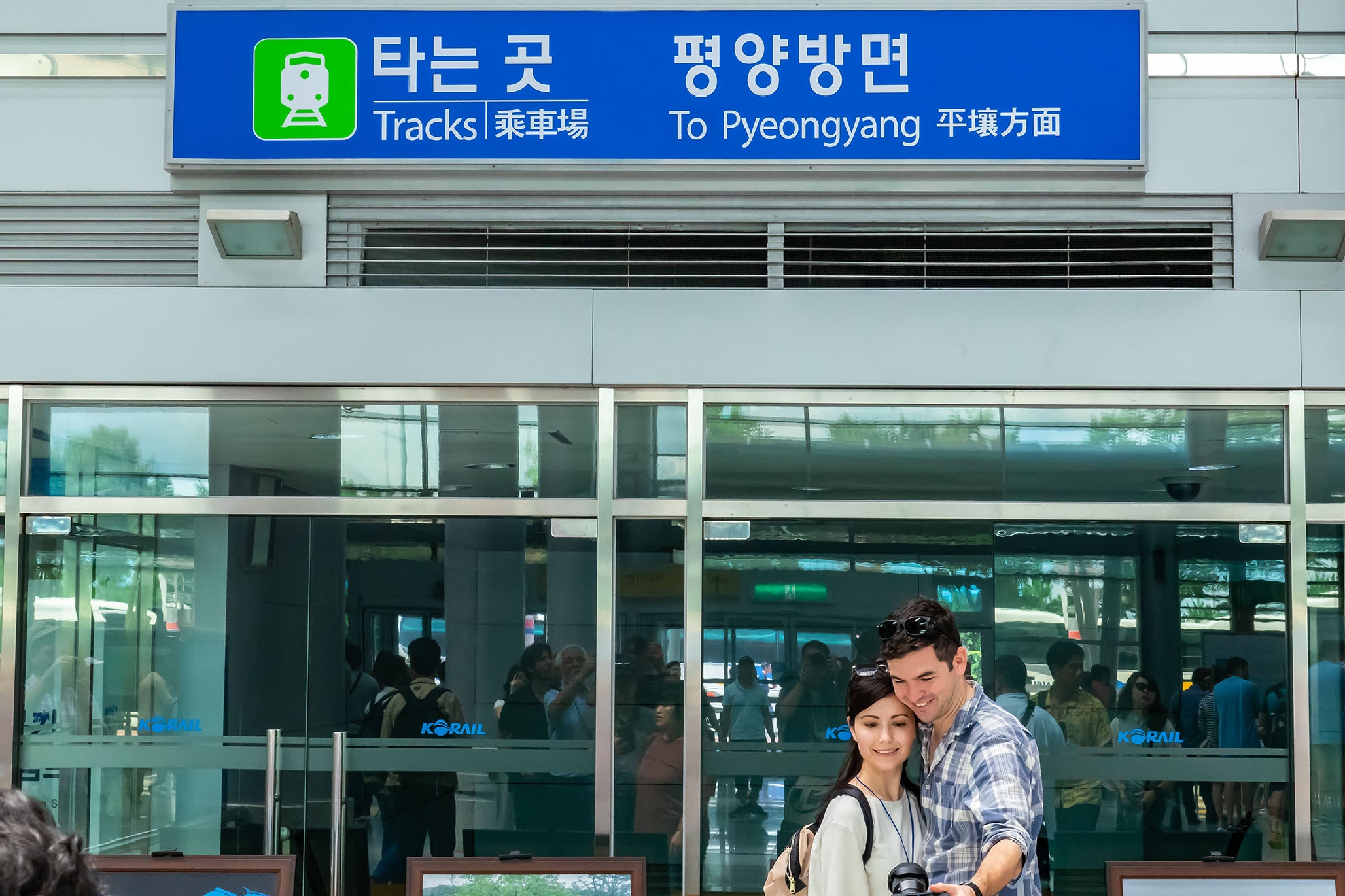
Faced with formidable challenges in North Korea’s denuclearization, talk of unification seems to be a distant dream. And before Korea’s ‘imperative’ or ‘wish’ for unification can even be brought up, a legally viable and peaceful coexistence of the two Koreas is a first step. This will require an end to the precarious armistice of a long overdue forgotten war. Only then can the adoption of a mutually acceptable and sustainable peace treaty be discussed.
Such a peace treaty would likely involve the United States and China in some form, however. And it would touch on issues where those two nations’ strategic interests are increasingly in conflict. An official end to hostilities would call into question the validity of the 28,500 US troops on South Korean soil, for example. And even if – and this is a very big ‘if’ – South and North Korea could settle the matter, Beijing would hardly agree to the idea of its rival continuing to station large numbers of troops at the gateway to its borders when the possibility of war has vanished from the Korean Peninsula.
Given the current circumstances and attitudes in Pyongyang, a more pressing and paramount objective of the day would be to bring North Korea to the negotiating table, and away from making further advances onto the wrong path of isolation and nuclear development.
Otherwise, aspirations for even a peaceful co-existence free from fear of another outbreak of war – let alone the long-treasured goal of unification – will be a pipedream for Koreans on either side of the peninsula.
(This story was updated on June 17, 2020 to reflect breaking news developments.)
Soojin Park is a Public Policy Fellow in residence at the Woodrow Wilson Center’s History and Public Policy Program and Asia Program. She served as Deputy Spokesperson for the Ministry of Unification in the Korean government from 2011 to 2016.
(Cover photograph: Korean unification flag. Image by Johnathan21 / Shutterstock)
